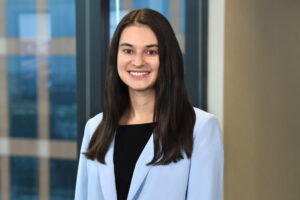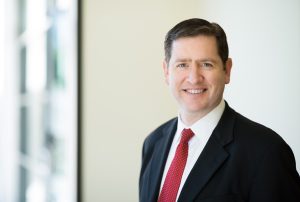Effective January 28, 2025, the new administration suspended the Climate Change Mitigation Pilot Program (CCMPP) at the United States Patent and Trademark Office (USPTO).[1] The USPTO had instituted this program in June 2022 “to positively impact the climate by accelerating the examination of patent applications for innovations that mitigate climate change,” as well as to support the Biden administration’s climate goals in Executive Order 14008.[2]
The CCMPP permitted applicants to expedite examination without meeting all of the requirements of accelerated or prioritized examination.[3] Under the CCMPP, applicants did not have to pay accelerated or prioritized examination fees, such as the fee for a petition to make special under 37 C.F.R. § 1.102(d).[4] Other waived requirements included performing and submitting a prefiling search and submitting an examination support document.[5] Under the “traditional” examination timeline, examination of new applications occurs in order of filing date, with examination beginning approximately two years from filing.[6] However, if a petition under the CCMPP were granted, the application would be placed on an examiner’s special docket until a first office action on the merits—usually within about six months after filing the CCMPP petition.[7]
Originally, the CCMPP only applied to products and/or processes that mitigated climate change by reducing greenhouse gas emissions, but the program failed to garner as many applications as anticipated in its first year.[8] As of February 21, 2023, 243 applications were filed under the CCMPP with only 154 of those applications granted special status.[9] In response, the USPTO expanded the eligibility requirements, beginning on June 6, 2023, to encompass more technologies, including those that “reduce, remove, prevent, and/or monitor greenhouse gas emissions.”[10] As of January 7, 2025, 1,399 CCMPP petitions were filed with 898 of them granted.[11]
With the suspension of the Climate Change Mitigation Pilot Program, applicants may still utilize the traditional ways of expediting the examination process. These include, for example, filing a Track One Prioritized Examination Request[12] or filing a petition to make special under 37 C.F.R. § 1.102.[13] Under § 1.102, a petition to make special will be granted without a fee if the invention will materially “(i) [e]nhance the quality of the environment or (ii) [c]ontribute to the development or conservation of energy resources. . . ,”[14] thereby accelerating examination.
Special status for environmental quality will be granted for applications “which materially enhance the quality of the environment of mankind by contributing to the restoration or maintenance of the basic life-sustaining natural elements, i.e., air, water, and soil.”[15] This standard means that an application will not be granted advanced examination “merely because some minor aspect of the claimed invention may enhance the quality of the environment.”[16]
Similarly, special status under conservation of energy requires that an invention “materially contribute to (A) the discovery or development of energy resources, or (B) the more efficient utilization and conservation of energy resources.”[17] Category A examples include “developments in fossil fuels (natural gas, coal, and petroleum), hydrogen fuel technologies, nuclear energy, solar energy, etc.,” while Category B examples include “inventions relating to the reduction of energy consumption in combustion systems, industrial equipment, household appliances, etc.”[18] Thus, many applicants that could have filed applications for inventions that “reduce, remove, prevent, and/or monitor greenhouse gas emissions,” under the suspended pilot program, may be eligible for accelerated examination without an additional fee. However, if an application does not fall under one of these two sub-categories, an applicant is required to pay up to a maximum fee of $140, as set forth in 37 C.F.R. § 1.17(h).
While the CCMPP was short-lived, it provided applicants with a cost-effective and streamlined approach to speed up examination. However, applicants wishing to speed up examination may still be able to rely on a number of other existing programs at the USPTO, albeit without all the advantages of the CCMPP.
Editor: Brenden S. Gingrich, Ph.D.
[1] Climate Change Mitigation Pilot Program – SUSPENDED, USPTO, https://www.uspto.gov/patents/laws/patent-related-notices/climate-change-mitigation-pilot-program (last visited Feb. 25, 2025).
[2] Id.
[3] Id.; Climate Change Mitigation Pilot Program, 87 Fed. Reg. 33750, 33751 (June 3, 2022).
[4] See Climate Change Mitigation Pilot Program, 87 Fed. Reg. at 33751.
[5] See id.; MPEP § 708.02(a).
[6] See Climate Change Mitigation Pilot Program, 87 Fed. Reg. at 33751.
[7] Climate Change Mitigation Pilot Program, 87 Fed. Reg. at 33752.
[8] Kristen Schepel: Changing the climate for innovation, NOAA (Oct. 24, 2023), https://research.noaa.gov/kristen-schepel-changing-the-climate-for-innovation/ (last visited Feb. 26, 2025).
[9] C. Erik Hawes et al., Early Results of USPTO’s New Climate Change Mitigation Pilot Program, Morgan Lewis (Feb. 23, 2023), https://www.morganlewis.com/pubs/2023/02/early-results-of-usptos-new-climate-change-mitigation-pilot-program (last visited Feb. 26, 2025).
[10] Climate Change Mitigation Pilot Program – SUSPENDED, supra note 1; see Expansion and Extension of the
Climate Change Mitigation Pilot Program, 88 Fed. Reg. 35841, 35842 (June 1, 2023).
[11] Climate Change Mitigation Pilot Program – SUSPENDED, supra note 1.
[12] Prioritized examination (Track One) is a much costlier process than seeking accelerated examination or filing under the now suspended pilot program. In addition to the basic filing fee, search fee, and examination fee, a request for prioritized examination must be accompanied by the prioritized examination fee set forth in § 1.17(c), the processing fee set forth in § 1.17(i), and if not already paid, the publication fee set forth in § 1.18(d). 37 C.F.R. § 1.102(e). These fees can cost an applicant thousands of dollars above basic filing costs. In addition, the number of prioritized examination requests that may be accepted in any fiscal year is capped at 15,000, regardless of subject matter, which may limit an applicant’s ability to seek prioritized examination in any given year.
[13] Under 37 C.F.R. § 1.102(c), “[a] petition to make special may be filed without a fee if the basis for the petition is (1) The applicant’s age or health; or (2) That the invention will materially (i) Enhance the quality of the environment; (ii) Contribute to the development or conservation of energy resources; or (iii) Contribute to countering terrorism” (emphasis added). Otherwise, such petition must be accompanied by the fee set forth in § 1.17(h). 37 C.F.R. § 1.102(d).
Additionally, petitioning to make special under accelerated examination requires a preexamination search and an accelerated examination support document, including an information disclosure statement (IDS). See MPEP § 708.02(a). These steps were not required under the pilot program and are more costly and cumbersome to applicants.
[14] (emphasis added).
[15] MPEP § 708.02.
[16] Id.
[17] Id.
[18] Id.

